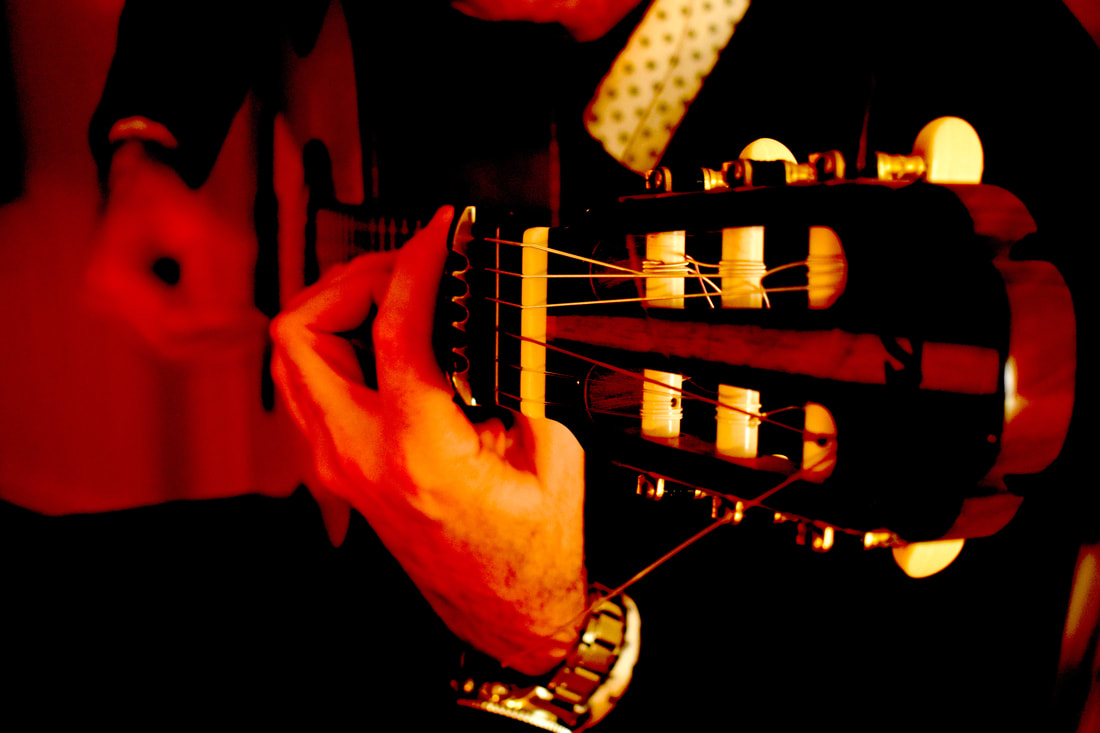The rhythm or compas in flamenco guitar varies by the style (palo) being used. Below we'll look at the compas for the flamenco rumba, the buleria and the solea.
Rafael counts the compas in rumba in 4/4 – that is, counting the beats '1' and '3' with his foot, and beats 1, 2, 3 and 4 with his hand (see the video for different examples.
The key thing is that the rhythm should be as if you're walking down the street - 'caminando' - to get it into your system!
Compas for Rumba in Flamenco Guitar
In the video above Rafael shows you a basic compas pattern for the rumba. To begin, you strum on notes 1 and 4. Or in Rafael's terms, 1-e-and-a-two-e-and-a- – strumming down on '1' and up on the 'and'.
To build on this, next you will add some extra strokes after the last 'a' - underlined below. The video will easier explain...
1-e-and-a-two-e-and-a-e-and-a-
Once you've got the basics of this, you can speed it up. Here's it from a closer-up angle – we have a better shot of it, with all the variations on Rafael's flamenco guitar online course.
Compas for Buleria in Flamenco Guitar
The buleria is perhaps the most popular palo or style for guitarists to learn because it stands out. But we warn you - it gets complicated pretty quickly!
That out of the way, it is counted in measures of 12, rather than the rumba where you count to 4.
Rafael goes through the compas for the buleria slowly in his online flamenco course. Here's an excerpt of a lesson on the compas for buleria below if you want to get straight to the point – but it assumes you're already familiar with some right hand techniques such as the golpe in flamenco:
Compas in Solea
The solea is also counted in beats of 12, which is strange because it flows so differently to the buleria above. But if you count Rafael in the video below, you will see it is in a measure of 12.
The solea in flamenco is a sadder style, from the word solitude (or loneliness) – and one of Rafael's favourites.
Learn from a Master Who's Performed for Royalty: Start Your Flamenco Journey Today
- Unlock this article & video library for free
- Join thousands of guitarists who finally got past only 'knowing some basic chords'
- Learn flamenco from a lifelong performer & celebrity teacher from Madrid
- Rafael has taught EOB (Radiohead), Jack Peñate & played for HRH Elizabeth II (etc)
By entering your email you agree to receive email updates from Flamenco With Rafael. See our Privacy Policy.




